
Perth is a centrally located Scottish city, on the banks of the River Tay. It is the administrative centre of Perth and Kinross council area and is the historic county town of Perthshire. It had a population of about 47,430 in 2018.
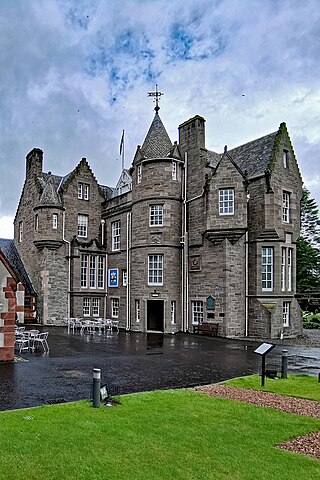
Balhousie Castle, located in Perth, Scotland, was built in the 17th century.
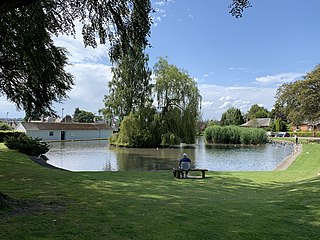
Kinnoull is a parish in Perth, Perth and Kinross, Scotland, approximately half a mile northeast of Perth city centre. Beginning at the level of the River Tay, which separates the parish from Perth, Kinnoull's terrain continues to rise as it continues southeast, culminating in Kinnoull Hill, the summit of which is at 728 feet (222 m).

Perth Theatre is an entertainment venue in Mill Street, Perth, Scotland. It opened in 1900 and was extended in the 1980s.

Trinity Church is a Uniting church located at 72 St Georges Terrace in Perth, Western Australia. Commenced in 1893, the former Congregational church is one of the oldest church buildings in the City of Perth, and one of the few remaining 19th-century colonial buildings in the city.

Andrew Balfour FRIBA was a Scottish architect.
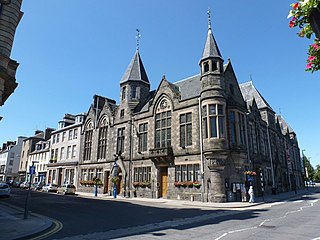
The Municipal Buildings are a municipal facility at Nos. 1, 3 and 5 High Street, Perth, Scotland. The facility is a Category B listed building.

St Mary's Monastery is an ecumenical Christian spirituality and retreat centre in Kinnoull, Perth, Scotland. It was built in 1868 by the Redemptorists. Until 1971, it also served as a novitiate for the Redemptorists. In 1870, the church and shrine, Our Lady of Perpetual Help, was built within the grounds. It is located on Hatton Road, to the east of Kinnoull, on the edge of Kinnoull Hill, overlooking the city of Perth. The building has been registered as a category B listed building by Historic Environment Scotland, and was the first Roman Catholic monastery established in Scotland since the Reformation.

Bridgend is a village near Perth, Scotland, approximately 0.25 miles (0.40 km) east of the city centre, on the eastern banks of the River Tay. It is in Kinnoull parish. A settlement has existed here since at least the 16th century.
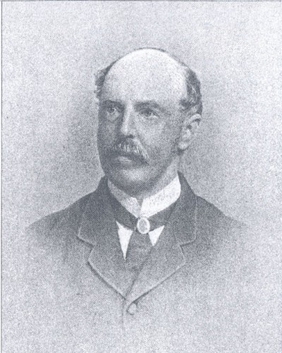
Andrew Heiton was a Scottish architect. He designed several notable buildings in Scotland, mostly railway stations and country houses.

Tay Street is a major thoroughfare, part of the A989, in the Scottish city of Perth, Perth and Kinross. Planned in 1806 and completed around 1885, it is named for the River Tay, Scotland's longest river, on the western banks of which it sits. The street runs from the confluence of West Bridge Street and Charlotte Street in the north to a roundabout at Marshall Place and Shore Road in the south. Three of the city's four bridges that cross the Tay do so in this stretch : Perth Bridge, Queen's Bridge and the single-track Tay Viaduct, carrying Perth and Dundee trains to and from Perth railway station, located 0.5 miles (0.80 km) to the north-west.
David Smart was a Scottish architect, prominent in the second half of the 19th century. His design genre varied between municipal buildings, schools and churches, but he worked almost exclusively in Perthshire.

Kinnoull Parish Church is a Church of Scotland church in the Kinnoull area of Perth, Perth and Kinross, Scotland. A Kinnoull Church appears in documents when it was granted to Cambuskenneth Abbey in 1361. It was rebuilt in 1779 but demolished in 1826 after the completion of a church on the Perth side of the River Tay, which flows a short distance behind the church.
Andrew Granger Heiton was a Scottish architect. He was prominent in the late 19th and early 20th centuries. Several of his works are now listed structures.
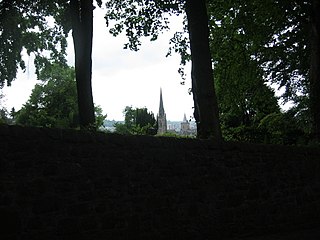
Kinnoull Terrace is a street in the Kinnoull parish of Perth, Scotland. A cul-de-sac, it contains five properties, each of which is of listed status and dating from the 19th century. The street was designed specifically, in the mid-19th century, to take advantage of its viewpoint across the River Tay, as was the case with the six villas in Bridgend, a few hundred yards to the north. Noted architectural historian Charles McKean observed that those with "money of the [19th] century jostled for prime sites and views on Dundee Road and Kinnoull Terrace".

The Sandeman Building, formerly the Sandeman Library, is a building on Kinnoull Street in Perth, Scotland. Designed by Campbell Douglas and David Morrison, the building is Category C listed, dating to 1898. Its foundation stone was laid on 14 October 1896, with full Masonic honours, by Perth's lord provost John Dewar, 1st Baron Forteviot. It was opened on 22 October 1898 by Lord Roseberry. The building stands at the corner of Kinnoull Street and Mill Street.
James Smart was a Scottish architect, prominent in the first half of the 19th century. He designed several notable buildings in Perthshire, several of which are now of listed status.
Robert Matthew Mitchell was a Scottish architect, prominent in the second half of the 19th century and first half of the 20th. He designed several notable buildings in Perthshire, several of which are now of listed status.
Witchhill House is an historic villa in Kinnoull, Perth and Kinross, Scotland. Located on Kinnoull Terrace, it is a Category B listed building, built around 1860. Designed by David Smart, it is one of five listed properties on the street, denoted by Historic Environment Scotland as items of special interest. Several of the properties appear on maps of Perth from the 1860s.
Craigievar and Darnick is an historic double villa in Kinnoull, Perth and Kinross, Scotland. Located on Kinnoull Terrace, it is a Category B listed building, built around 1870. The work of architect Andrew Heiton, who lived at the property upon its completion, it is one of five listed properties on the street, denoted by Historic Environment Scotland as items of special interest. Several of the properties appear on maps of Perth from the 1860s.















